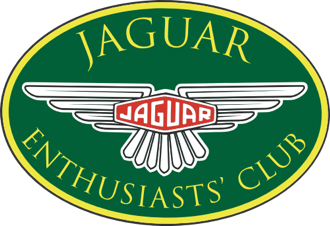When you are global car brand, and you want to enter a new market, you have two choices. Either you invest many millions into research and development and rebrand yourself and your range or you warm up the credit card and go shopping.
In 1989, that is precisely what Ford did. The market they were looking to enter was the then booming luxury car sector that had begun to be dominated by German brands. On 11 November 1989 it was announced that Ford had paid $2.5 billion dollars for the Coventry Cat.
Frankly, that Jaguar had managed to come out the other side of the British Leyland days of the 1970s at all was nothing short of a miracle, but now, they were back on the up. The XJ40 was a good car, despite what the press might tell you now and they were winning on the world stage in motorsport as well, thanks to their partnership with Tom Walkinshaw Racing.
But behind the scenes, things weren’t in good shape. The development of new cars was impossible for the cash strapped company, the factory was antiquated for the demands of the forthcoming 1990s and what’s more, a global recession was looming. However, the brand was still in good shape, thanks to the efforts of Sir John Egan who had navigated the car make through the post-BL era.
Bill Hayden was the man Ford tasked with running Jaguar after the acquisition and he made it clear very early on that he was not impressed with the quality of the cars that Jaguar were producing. The comment he made to workers at Browns Lane is well documented. Hayden said the only factory he had ever seen that was worse than Browns Lane, was the Gorky car plant in Russia! It was a scathing statement to make publicly, and it was made worse by stories of workers painting over Bird droppings that had accumulated on body shells inside the shack of a factory over in Russia. Not a fair comparison perhaps, but one that certainly sent shockwaves through the plant.
Then, that aforementioned recession arrived and volumes fell through the floor. Output more than halved to the point where, in 1992, Jaguar made only 20,000 cars all year. That luxury market that Ford had so eagerly craved, evaporated overnight. By 1994, Jaguar were losing over a million pounds a day.
But then the turnaround came. The X300 XJ6 arrived and later the approval for Jaguar’s first production V8 engine, something that had been attempted back in the 1970s when the Rover V8 was proposed for the XJ6. Workers revolted so vigorously at the notion of this, that it's said they actually designed the car to ensure it would never fit! A Rover engine had no place in a Jaguar they said. Now, they were about to start building their own V8 lump.
By now, Nick Scheele was at the helm replacing Hayden. He presided over a period of growth for Jaguar that the company had never seen before in it’s history. But then, he did start at rock bottom. He brought quality levels up and by 1996 was able to wave goodbye the XJS, a child of the 70s , in order to engage with us at the Jaguar Enthusiasts’ Club to help launch the new V8 sports grand tourer - the XK8.
Pooling the resources from Ford, the S-Type followed and gave rise to the Castle Bromwich plant that today builds the future’s electric vehicles. They launched a baby Jaguar too, the X400 or X-Type and looked to re-establish themselves as a sporting brand with an entry into Formula one.
As the new millennium dawned, Jaguar moved from being a small scale, slightly quirky brand obsessed with heritage to being at the forefront of technology - with an aluminium bodied XJ6. It came at a cost though, as mistakes in production hit the bottom line hard, but they still had it in them to go on to use high-performance Diesel engines for the luxury saloons - a complete about turn for the brand.
They were included in the wholly owned Ford subsidiary group of car companies called “Premier Automotive” which saw Jaguar sit alongside Aston Martin, Lincoln and Volvo.
The Ford era wasn’t without its bumps in the road for Jaguar, but ultimately, it transformed the brand and set it up for a bright future that it still enjoys today, albeit in the hands of Tata as part of Jaguar Land Rover.


